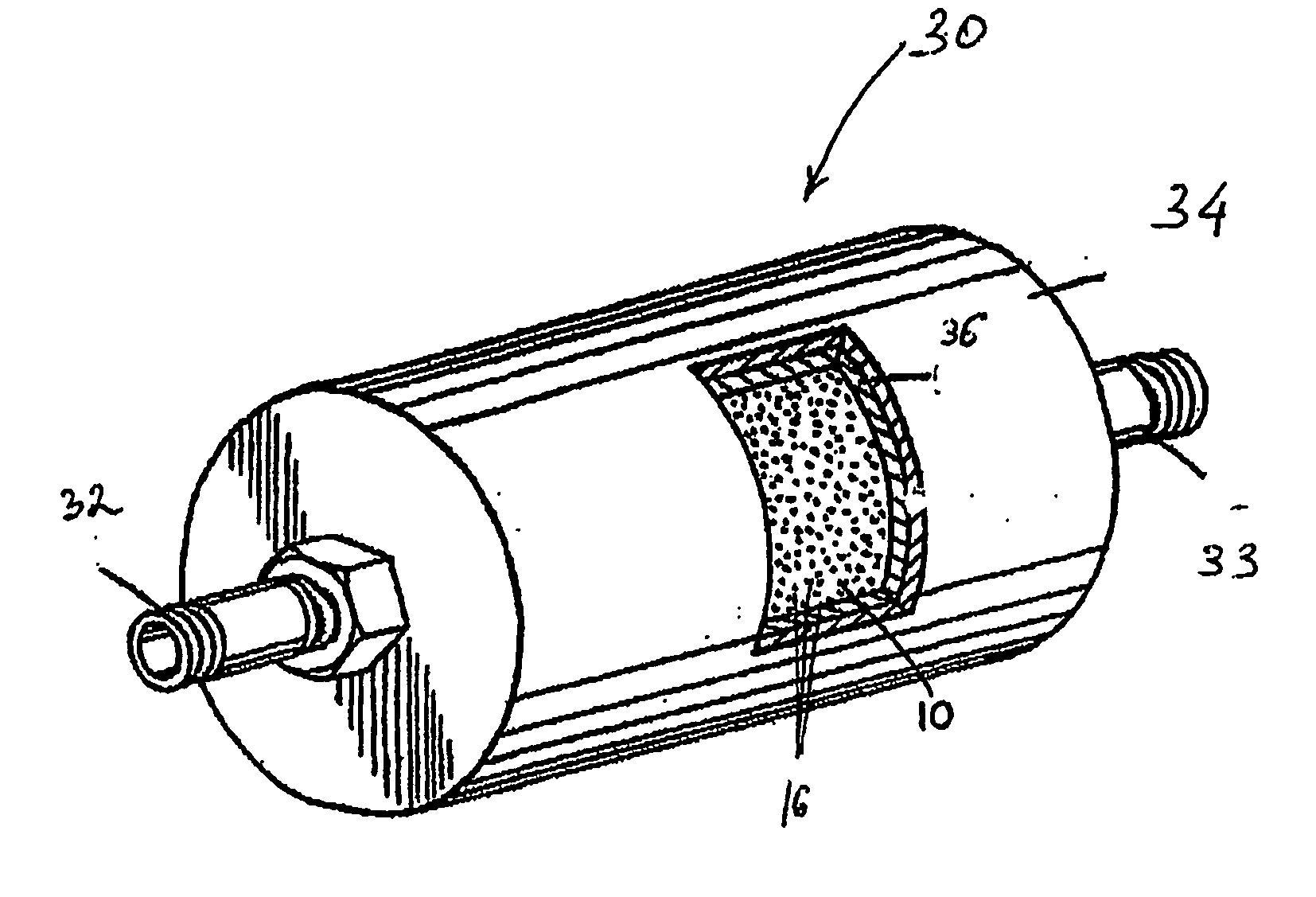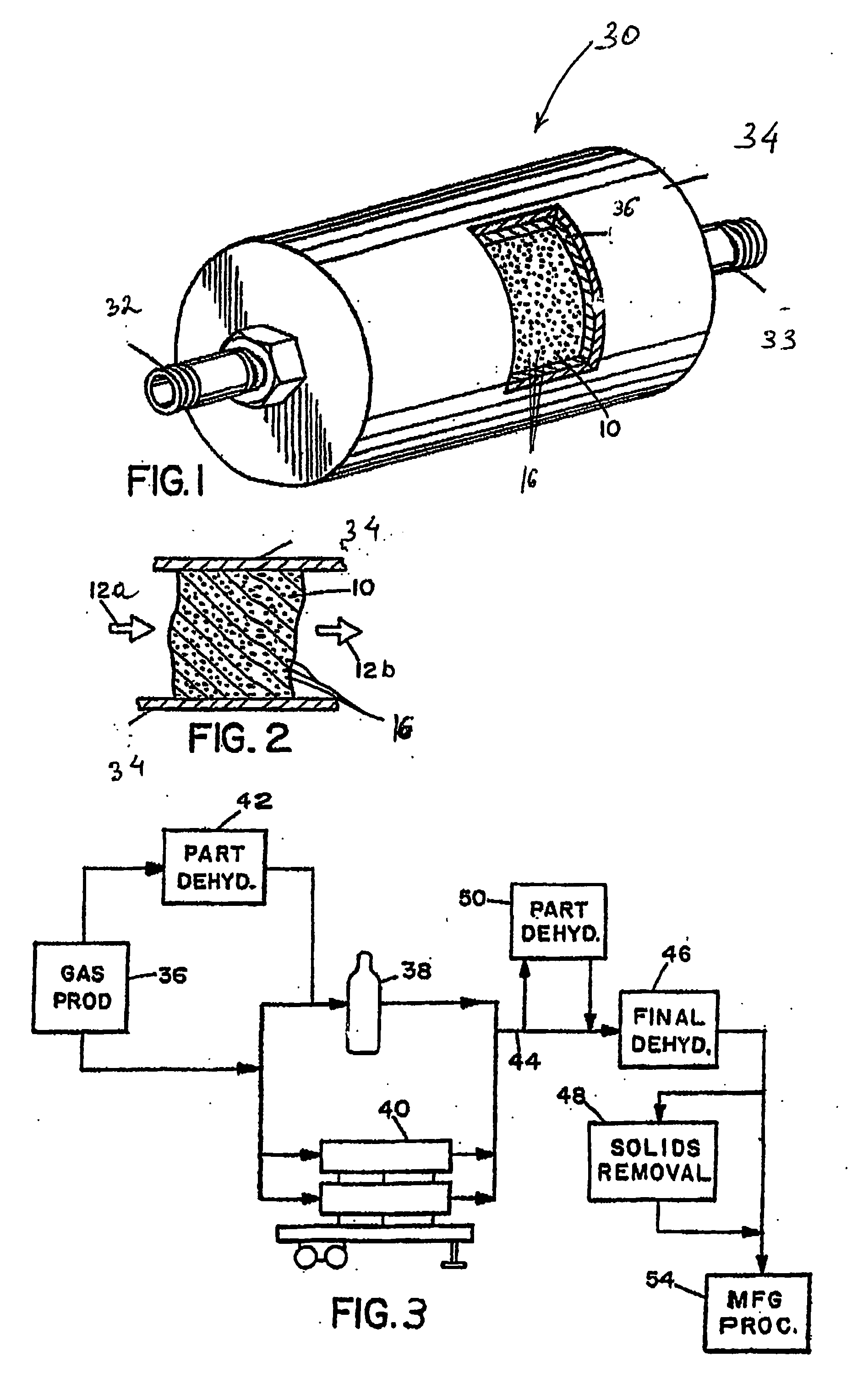Apparatus and method for purification of corrosive gas streams
a technology of corrosive gas and apparatus, which is applied in the direction of bromine, magnesium halides, separation processes, etc., can solve the problems of high corrosive to manufacturing system equipment, the moisture content of the ppm range of the deposited gas is too wet, and the most difficult impurities to remove from the gas are too w
- Summary
- Abstract
- Description
- Claims
- Application Information
AI Technical Summary
Benefits of technology
Problems solved by technology
Method used
Image
Examples
example 1
Preparation of Zirconia for Use in the Present Invention
[0052] A preferred method for preparation of zirconia for use in the instant invention comprises:
[0053] 1. Mixing Mg(OCOCH3)2 with ZrO2 in water and allowing the insoluble magnesium impregnated zirconia to collect on a surface. ZrO contained about 1.5 wt. % hafnium and has a single point surface area of about 35 m2 / g.
[0054] 2. The magnesium-zirconium-water mixture is filtered, optionally pellitized, and the insoluble material is dried about 16-24 hours at about 150° C.
[0055] 3. The material is then subjected to heating at about 300° C. for about 15 hours.
[0056] 4. The material is then put into canisters or other end use devices.
[0057] 5. The material is activated at about 200-500° C., preferably in 95% Ar / 5% H2, until the amount of moisture released drops to an acceptable level. This requires, typically, 1.5 to 4 hours. The end use device is shipped to the end user.
[0058] 6. The device is conditioned with halide gas unti...
PUM
| Property | Measurement | Unit |
|---|---|---|
| temperature | aaaaa | aaaaa |
| temperature | aaaaa | aaaaa |
| temperature | aaaaa | aaaaa |
Abstract
Description
Claims
Application Information
 Login to View More
Login to View More - R&D
- Intellectual Property
- Life Sciences
- Materials
- Tech Scout
- Unparalleled Data Quality
- Higher Quality Content
- 60% Fewer Hallucinations
Browse by: Latest US Patents, China's latest patents, Technical Efficacy Thesaurus, Application Domain, Technology Topic, Popular Technical Reports.
© 2025 PatSnap. All rights reserved.Legal|Privacy policy|Modern Slavery Act Transparency Statement|Sitemap|About US| Contact US: help@patsnap.com


